During the afternoon the ship sailed through Esna Locks and towards
our next stop at Kom Ombo.
We were kept amused by local tradesmen in small boats who lassoed
themselves along side, balancing precariously in the wash, and throwing up
their wares to the sundeck and later to our balcony for us to buy.
They had to be accurate as it must have been more than five
metres above them as you can see from the photos.
Unfortunately they were not so good at bartering and the
prices were too high compared to the shops on board.


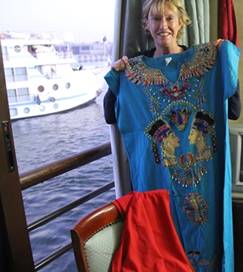
The next day the landscape had begun to change from desert
sand to fertile green land.

Kom Ombo
This temple stands on a small hill overlooking the Nile, it is the unification of two adjacent temples, one
dedicated to the crocodile headed Sobek, God of fertility and creator of the
world and the other dedicated to Horus, the falcon headed, solar war God.


Despite packing independently Derry
and I were always very well coordinated !
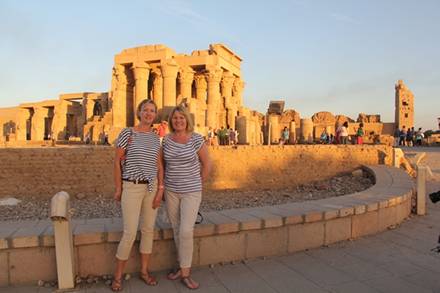
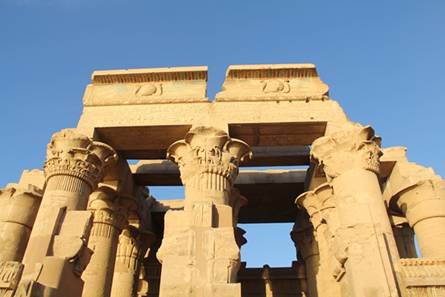
The hieroglyphics and reliefs were carved much deeper in this
temple and therefore they were very clear to interpret.
Below the reliefs around the outside walls show rows of
enemies captured and tied up and the next picture shows the two Gods, one with the
crocodile head and one with the Falcon head, they are both holding the key of
life in one hand and the sceptre of the Gods in the other.
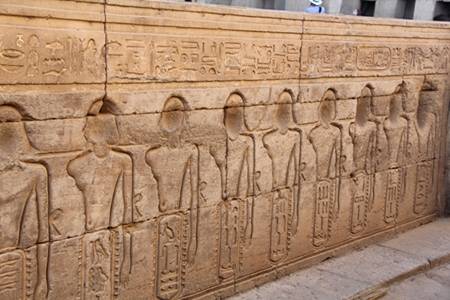
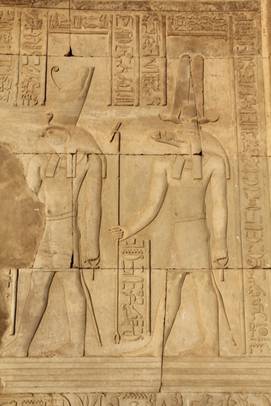
The first picture below is an Egyptian calendar, a dating
system established several thousand years before the Christian era, the first
calendar known to use a year of 12 months and 365 days,
The second picture depicts a birthing chair and adjacent a
whole series of surgeons instruments, scalpels, forceps etc., confirming the
high degree of skill achieved by Egyptians in the field of medicine.


Of course all these carvings would have been painted in
bright colours which have now faded.
It is amazing that these monuments had been buried in sand
for thousands of years before being uncovered again from the late 1700’s,
and, in fact, archaeologists are still uncovering artefacts from Ancient Egyptian
civilisation today.












